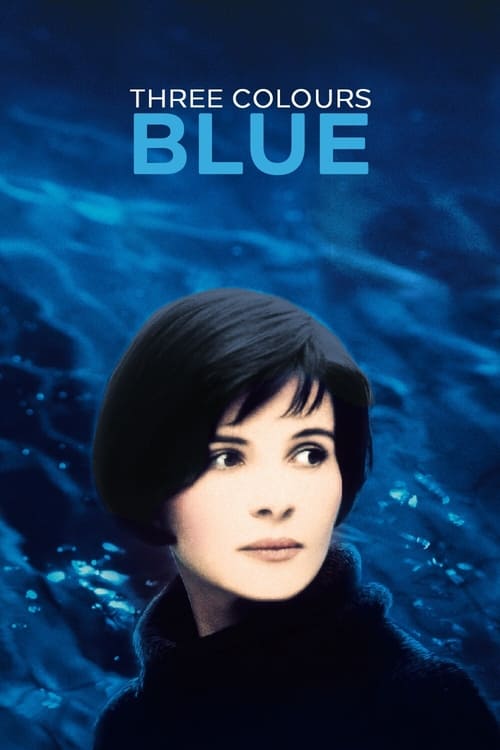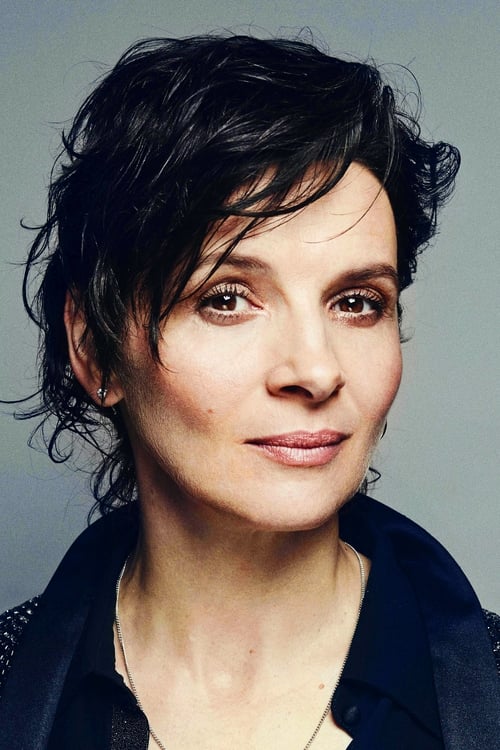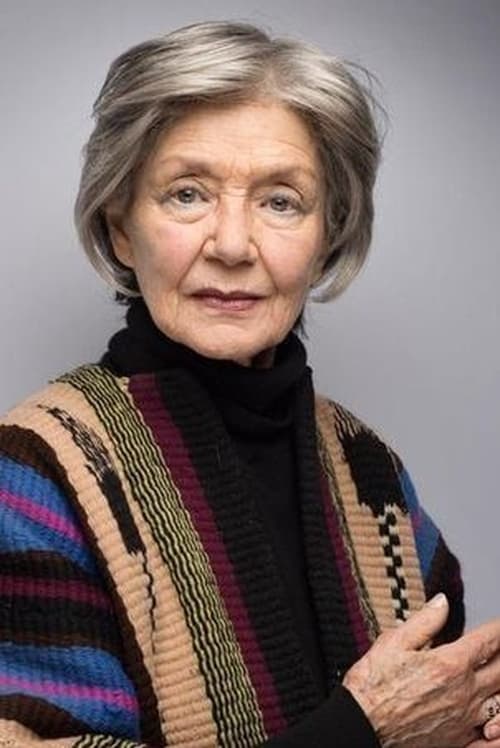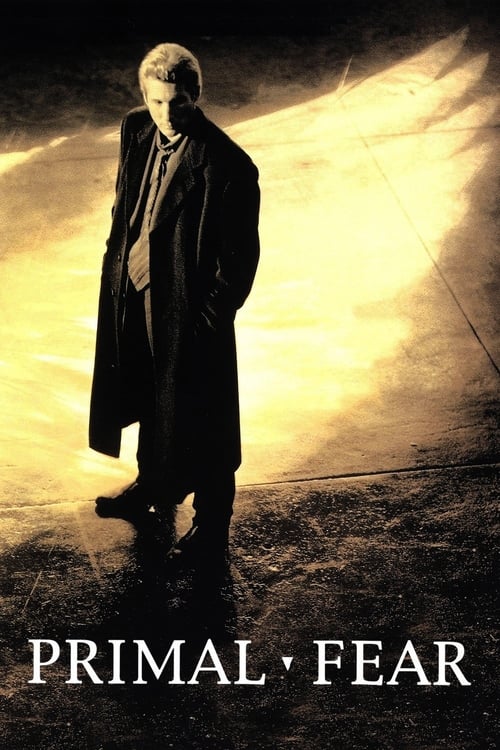
Three Colors: Blue
The wife of a famous composer survives a car accident that kills her husband and daughter. Now alone, she shakes off her old identity and explores her newfound freedom but finds that she is unbreakably bound to other humans, including her husband’s mistress, whose existence she never suspected.
Quotes from Movie Three Colors: Blue
Memorable Scenes from Movie Three Colors: Blue
The Car Crash
In a haunting opening, we witness an unexpected car crash that claims the life of Julie's family, setting the tone for the entire film. The crushing silence after the crash lingers, leaving viewers in shock. This event drastically alters her life, thrusting her into a world of grief and isolation, pushing her to disconnect from her past.
Context: This tragic accident serves as the catalyst for Julie's transformation throughout the film, symbolizing the loss of her old life and the emotional journey she must undertake.
Struggling with Mourning
After the crash, Julie returns to her family's home, faced with reminders of her lost loved ones. The poignant visuals of empty rooms and her struggle to not break down captures the rawness of her grief. As she walks through the empty house, each step is heavy with the weight of her memories, emphasizing her disconnection from reality.
Context: This moment deepens our understanding of Julie’s isolation and the emotional burden she carries, setting the stage for her journey toward self-discovery and healing.
The Music Composition
Julie destroys her late husband’s unfinished score and shreds the sheets of music. This act symbolizes her rejection of her past and her desire to free herself from the ties that bind her to her husband's legacy. Her actions are both liberating and sorrowful, encapsulating the film's theme of freedom through loss.
Context: This pivotal moment marks Julie's initial struggle to reclaim her identity, showcasing her complex relationship with her lost family and the art that once defined her.
Encounter with Olivier
Julie meets Olivier, who tries to connect with her through music and remains fascinated by her. Their brief conversation is charged with unspoken emotions, highlighting her struggle to connect with others while still mourning. The chemistry between them is palpable but overshadowed by her grief.
Context: This dynamic illustrates the tension between moving on and holding onto the past, enhancing Julie's internal conflict.
Swimming Pool Scene
In a striking visual sequence, Julie dives into a pool, symbolizing a moment of immersion into her emotions. As she swims gracefully, the water acts as both a barrier and a cleansing force, emphasizing her desire to escape her painful reality. The serene visuals juxtapose her inner turmoil, crafting a profound scene of rebirth and reflection.
Context: This scene signifies her attempts to dive deep into her feelings, foreshadowing her attempt to reconcile her past with her present.
The Telephone Call
Julie receives a call from a woman claiming to be the mistress of her late husband. The confrontation is raw and emotional, culminating in Julie’s fierce denial of the woman's existence in her life. This moment is pivotal as it forces Julie to confront her pain and the realities of her husband’s infidelity.
Context: This revelation adds another layer of complexity to her grief, showcasing the multifaceted nature of love and loss.
The Flashback of Happiness
A sudden flashback reveals moments of joy between Julie and her family, contrasting sharply with her current loneliness. These memories are filled with light, laughter, and love, breaking through the darkness of her grief. It acts as a bittersweet reminder of what she has lost.
Context: It emphasizes the depth of her loss and brings a stark contrast to her present situation, enhancing the emotional weight of her journey.
Finding her Voice
When Julie finally begins to socialize and pursue music, she gradually finds her voice. This scene depicts her initial reluctance but eventual acceptance, as the audience feels her struggle to embrace life again. The score slowly starts to return, suggesting a rebirth of her passion.
Context: This turning point is crucial in Julie’s character arc, emphasizing her growth from grief toward acceptance.
The Night at the Club
Julie performs at a club for the first time, her emotional resonance with the music captivating the audience. The visceral connection she feels during the performance represents a cathartic release of her pain. Each note resonating with her journey highlights her rebirth as an artist.
Context: This symbolizes her reclaiming her identity and the merging of her past with her newly formed self.
Confronting the Mistress
In a crucial encounter, Julie finally confronts the woman linked to her husband. The confrontation filled with raw emotions explores jealousy and betrayal. The tension culminates in a powerful exchange, allowing Julie to express her anger and heartbreak.
Context: This moment acts as a necessary catharsis, allowing her to finally vocalize the grief and betrayal she has been carrying.
The Reconnection with Music
Julie composes new music, pouring her fragmented feelings into her art. As she writes, vibrant compositions mirror her healing process, showcasing her transition from victimhood to empowerment. This scene visually and aurally represents her inner transformation.
Context: This pivotal moment marks a significant shift in her character, as she learns to embrace her creativity as part of her identity.
A Moment of Vulnerability
In a quiet moment alone, Julie breaks down, allowing herself to truly feel her grief. The tears flow freely, marking a departure from her earlier stoicism and acceptance of her emotions. The vulnerability expressed in this scene evokes empathy and connection.
Context: This moment is essential for the audience’s understanding of her emotional landscape, showcasing the necessity of acknowledging pain to heal.
The Visit to the Cemetery
Julie visits her family's graves, confronting the magnitude of her loss. The stark visuals of the cemetery create a somber atmosphere, making this moment heavy with emotion as she reflects on her past life, signifying acceptance of her pain.
Context: This moment reaffirms her connection to her loved ones while simultaneously marking a turning point in her grieving process.
The Power of Forgiveness
Julie seeks forgiveness from her husband through moments of reflection and emotional turmoil. She navigates the complexities of her feelings towards the betrayal and loss, ultimately granting herself the freedom to let go. The emotional weight carried in this cathartic release resonates deeply.
Context: This scene signifies her transition from holding onto resentment to finding peace, demonstrating her emotional growth.
The Symbolism of Blue
The use of blue throughout the film becomes a powerful motif, symbolizing sadness and emotional depth. In a visually stunning montage, blue hues envelop Julie as she navigates her sorrow, reinforcing the theme of grief pervading her life.
Context: This symbolism ties back to the film’s overall theme of how colors convey the complexities of human emotion.
The Final Piano Piece
In a beautifully orchestrated finale, Julie performs a moving piece that encapsulates her journey. The emotions pour out through the music, allowing the audience to experience her transformation, moving from despair to acceptance. This climactic performance serves as a culmination of her character arc.
Context: This closing moment emphasizes the importance of reclaiming one’s voice and the healing power of art.
The Departure from the Past
In the final moments, Julie walks away from her past, leaving behind the remnants of her old life. The visual imagery of her moving forward into a new space symbolizes hope and resilience. Her journey towards healing becomes evident, providing a bittersweet but hopeful ending.
Context: This concluding moment encapsulates the film’s core themes of loss, love, and the slow journey toward healing.
The Reunion with Olivier
In a quiet moment of reconnection with Olivier, their dynamic shifts subtly from tension to mutual understanding and respect. The dialogue is soft and earnest, conveying a sense of hope as they navigate their complicated feelings, suggesting a future together filled with potential.
Context: This scene foreshadows the possibility of new beginnings, reinforcing the theme of moving on after loss.
The Embrace of Life
Julie finally embraces life again, choosing to engage with the world around her. The montage of her interactions with new friends and experiences culminates in a powerful realization of her resilience. As she smiles and laughs, viewers feel the weight of her journey transforming into hope.
Context: This marks the completion of her arc from emptiness to fullness in life, aligning with the film's themes of acceptance and rebirth.
The Impact of Music
Julie is seen encouraging others with her music, bridging connections with her audience. This moment highlights how she has transformed her sorrow into a shared experience, using her art as a way to touch lives. Her passion becomes a source of healing not just for herself, but for others as well.
Context: This emphasizes the film’s exploration of art’s ability to connect and heal, showcasing the redemptive power of creativity.
Discovery of Strength
Finally, Julie reflects on her journey, contemplating her newfound strength and resilience. The visuals show her in serene solitude, accepting who she is and where she has been while looking forward with hope.
Context: This moment captures the essence of her character growth, tying back to the film’s central themes of loss, acceptance, and the beauty of moving forward.
Download App
Behind the Scenes from Movie Three Colors: Blue
Realistic Soundtrack Decisions
The film's composer, Zbigniew Preisner, created a unique auditory experience by including the sounds of real instruments that blended with the film's visuals, which were purposefully designed to express the protagonist's emotional state.
Why it matters: This decision enhanced the emotional resonance of the film, making the audience feel exactly what Julie, played by Juliette Binoche, was experiencing. The subtlety of sound created a deeper connection with the character, elevating scenes that relied on a visual narrative.
Opening Sequence's Symbolic Water
The film starts with a haunting sequence where water is a recurring motif, shot with intense close-ups to symbolize both life and loss, reflecting the protagonist's emotional turmoil.
Why it matters: This artistic choice put emphasis on the film's themes of grief and liberation, immediately drawing viewers into Julie's complex psychological state. The use of water as a motif became a critical visual shorthand for the emotional currents throughout the film.
Color Palette's Emotional Coding
Director Krzysztof Kieślowski meticulously decided on a color palette dominated by blue. This choice was intentional, aiming to evoke feelings of sadness and serenity, corresponding with the film's themes.
Why it matters: By utilizing blue as both a visual and thematic anchor, Kieślowski created an iconic cinematic experience that resonated profoundly with audiences, going beyond a simple color scheme to embody the entire emotional journey of the film.
On-Set Personal Tragedy
Juliette Binoche experienced personal loss during filming, as her mother was gravely ill. This tragedy lent her performance an authentic weight that was palpable on screen.
Why it matters: Binoche's real-life grief infused the character with an intensity and authenticity that profoundly affected audience reactions, making her performance one for the ages and further elevating the film’s emotional depth.
Dreamlike Sequences
The film features dream sequences that are distinctly surreal yet grounded in Julie's reality, challenging viewers to discern what is real and what is a manifestation of her grief.
Why it matters: These sequences provided a visual counterpoint to the otherwise stark realism of Julie's life, inviting viewers to explore the depths of her psyche and emotional state, enhancing the narrative complexity of the film.
Editing Choices
Editor Jacques Witta's decisions to cut certain scenes were heavily influenced by Kieślowski's desire to keep the pacing reflective and meditative, avoiding overt exposition.
Why it matters: This style of editing allowed the film to maintain an atmosphere of introspection, which aligned perfectly with the thematic content, ultimately allowing more room for audience interpretation.
The Role of Silence
Kieślowski intentionally placed moments of silence in the film, freeing the audience from continuous dialogue and allowing natural sounds and visual storytelling to unfold.
Why it matters: These silent moments drew attention to the film's emotional landscape, ensuring that the audience connected with Julie’s solitude and introspection, adding layers of complexity to the viewing experience.
Rehearsal as a Tool
Before filming, Juliette Binoche and the supporting cast underwent extensive rehearsals that included improvisation to build chemistry and authenticity.
Why it matters: The deep connection established through these practices is evident on screen, creating a more relatable and authentic portrayal of relationships, particularly in moments of intimacy and conflict.
Kieślowski's Visual Philosophy
Kieślowski had a concept of using imagery and sequences to represent philosophical ideas, often visualizing concepts of freedom and bondage through Julie’s interactions and settings.
Why it matters: This philosophical underpinning transformed the film into a contemplative meditation on existence, making viewers question broader themes of life and human connection.
Soundtrack Collaborations
The film's score features orchestral works that were later adapted and recorded in communion with the film's visual storytelling, creating a cohesive artistic piece.
Why it matters: The integration of Preisner's score with aspects of the film's narrative structure added a dimension to the overall emotional impact, effectively blending sound and image into a singular experience.
Use of Natural Lighting
Cinematographer Sławomir Idziak employed natural lighting to create an authentic atmosphere, enhancing the melancholic tone of the film and the realism of the characters' struggles.
Why it matters: This choice imbued the film with an emotional authenticity that deepened viewer empathy for Julie, enhancing the resonance of personal moments within the larger narrative.
Incorporation of National Identity
The film subtly weaves elements of French national identity through its locations, underscoring the personal and societal themes at play in Julie's story.
Why it matters: This emphasis on national identity added depth to Julie's character arc, allowing audiences to grapple with both personal and broader existential themes unfolding within the narrative.
Constantly Shifting Narratives
Scenes were often shot out of sequence, reflecting Julie's fragmented emotional state, creating a non-linear narrative structure that mirrors her internal chaos.
Why it matters: This decision from the director visually represented Julie's psychological journey, inviting viewers to engage deeply with her emotional landscape as they piece together her life story.
Dynamic Costume Design
Costume designer Alexandra Mardirussian purposely used color and texture to reflect the character's emotional journey, particularly in how Julie's wardrobe evolves throughout the film.
Why it matters: The costume transformations parallel Julie's quest for emotional freedom, inviting viewers to interpret her journey through visual cues, thus enhancing the storytelling.
Symbolic Use of the Piano
The piano, a prominent symbol in the film, is featured in emotionally charged sequences, representing both the beauty of music and the weight of memory.
Why it matters: This duality resonated with audiences on multiple levels, enhancing the narrative tension while deepening emotional engagement with Julie's character and her past.
Artistic Inspirations
Kieślowski drew inspiration for Blue from Jean-Paul Sartre's philosophy, merging existential themes that centered around freedom, choice, and personal grief.
Why it matters: This philosophical grounding enriched the film’s narrative depth, prompting audiences to reflect not just on Julie's journey, but on broader implications of freedom and choice in their own lives.
Cameo Appearances
One of the characters, the musician, is played by real-life composer and musician, who improvised much of his performance during the film.
Why it matters: This added an authenticity that’s difficult to replicate with scripted performances, enhancing the film's realism and emotional impact.
Use of Shadows
The film's cinematographer strategically used shadows and silhouettes, often framing Julie in stark contrasts to evoke her feelings of isolation.
Why it matters: This visual technique emphasized themes of loneliness and confinement, creating a powerful emotional resonance that audiences connect with on a subconscious level.
Kieślowski's Storytelling Approach
Kieślowski approached the writing of the script with a strong thematic focus, letting the character's emotional journey dictate dialogue rather than the other way around.
Why it matters: This method ensured each moment felt authentic and natural, allowing for a more profound connection between the character and the viewer, ultimately enhancing the film's overall impact.
Symbolism of the Blue Color
Blue was not only an aesthetic choice but symbolized sorrow and freedom. Kieślowski used it as a means to reflect Julie’s inner turmoil and quest for independence.
Why it matters: This symbolism is a key element that enhances viewer interpretation, creating a layered narrative that resonates thematically across various contexts.
Cultural References
The film integrated cultural references, such as the inclusion of French music and literature, grounding the film in its setting while enhancing the narrative.
Why it matters: These references allowed the audience to connect with the cultural richness of the landscape, while also emphasizing the themes of loss and personal history central to Julie's story.
Julianna's Character Development
Juliette Binoche's portrayal of Julie was heavily influenced by her own personal explorations and creative inputs, providing a unique depth to the character.
Why it matters: This active collaboration between actress and director resulted in a performance that felt deeply authentic, making Julie’s emotional trajectory credible and relatable for audiences.
The Intimacy of the Camera Work
Cinematographer Sławomir Idziak employed close-ups and intimate framing that brought the audience into Julie's personal space, highlighting her emotional struggles.
Why it matters: This method drew viewers emotionally closer to Julie's journey, enhancing the impact of her grief and allowing them to experience her personal transformation more palpably.
Download App








